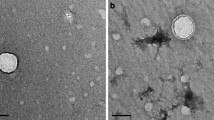Abstract
In developing a drug delivery strategy, issues of absorption, distribution, metabolism, and elimination must be considered. The eye presents unique opportunities and challenges when it comes to the delivery of pharmaceuticals. While absorption by this route is bungling, there are few side effects with conventional ocular dosage forms. Hence, ocular inserts were prepared with prolonged release of drug and minimum swelling within cul-de-sac using esmolol HCl drug the work focuses on treatment of glaucoma by formulating ocular inserts. By using different polymeric combination of esmolol HCl using hydroxypropyl methyl cellulose (HPMC 3–5 %), chitosan (3–5 %), polyvinyl alcohol (PVA 3–5 %), methyl cellulose (3–5 %) as polymer by solvent casting technique with objective of increasing contact time, achieving controlled release, reduction on frequency of administration and greater therapeutic efficiency. The prepared ocular insert were then evaluated for physical appearances tensile strength, % elongation at break, stress, weight variation, uniformity of thickness, % moisture absorption, surface pH, folding endurance, Fourier transform infrared spectroscopy, in-vitro transcorneal permeation studies etc. It is evident from these study that formed polymeric ocular insert have appreciable strength and safety. Physicochemical characterization and in vitro transcorneal permeation studies revels that, the prepared ocular insert formulation F2 and F8 containing HPMC and PVA had release their drug content, 98.54 and 97.24 respectively over a extended period of 24 h. Hence these formulation selected as best optimized formulation.












Similar content being viewed by others
References
Ahuja M, Dhake AS, Dipak kanti M (2006) Effect of formulation factors of in vitro permeation of diclofenac from experimental and marketed aqueous eye drops through excised goat cornea. Pharm Soc Jpn 126(12):1367–1369
Attia Shafie Mohamed Ali, Hassan Rady Mai Ahmed (2012) In vitro and in vivo evaluation of timolol maleate ocular inserts using different polymers. J Clin Exp Ophthalmol 3:8
Benson H (1974) Permeability of the cornea to topically applied drugs. Arch Ophthalmol 91:313–327
Dhanaraju MD, Sivakumar VR, Bhaskar K (2002) Bioadhesive ocuserts matrix for ophthalmic administration of ciprofloxacin HCl. Indian Drugs 39:222–224
Genta I, Conti B, Perugini P, Pavanetto F, Spadaro A, Puglisi G (1997) Bioahesive microsheres for ophthalmic administration of acyclovir. J Pharm Pharmacol 49:737–742
Godard V, Goldschmidt P, Pouliquen Y (1994) Gancyclovir ophthalmic gel in herpes simplex virus rabbit keratitis: Intraocular penetration and efficacy. J Ocul Pharmacol 10:439–451
Hanna C (1980) Delivery of antibiotics to the eye. Life Sci 27:2509–2512
Hanna C, Massey JY, Hendrikson RO, Williamson J, Jones EM, Wilson P (1978) Ocular penetration of topical chloramphenicol in humans. Arch Ophthalmol 96:1258–1261
Harishkumar SL, Balasubramaniaum J, Kumar MT (2004) In vitro characterization of physically reinforced ocular inserts of Indomethacin. Acta Pharm Turcica 46:17–24
Limpongsa E, Umprayn K (2008) Preparation and evaluation of diltiazem hydrochloride diffusion-controlled transdermal delivery system. AAPS PharmSciTech 9:464–470
Mishra DN, Gilhotra RM (2008) Design and characterization of bioadhesive insitu-gelling ocular inserts of gatifloxacin sesquihydrate. DARU 16:1–8
Patton TF, Francoeur M (1978) Ocular bioavailability and systemic loss of topically applied ophthalmic drugs. Am J Ophthalmol 5:225–229
Pawar PK, Katara R, Majumdar DK (2012) Design and evaluation of moxifloxacin hydrochloride ocular inserts. Acta Pharm 62:93–104
Saisivam S, Muthumanikandar RV (1999) Design and evaluation of ciprofloxacin HCl ocuserts. Indian J Pharm Sci 61:34–38
Sreenivas SA, Hiremanth SP, Godbole AM (2006) Ofloxacin ocular inserts: design, formulation and evaluation. IJPT 5:159–162
Sultana Y, Aquil M, Ali A (2005) Ocular insert for controlled delivery of pefloxacin mesylate: preparation and evaluation. Acta Pharma 55:305–314
Vijapur LS (2012) Formulation, in-vitro & in-vivo evaluation of novel ocuserts of flurbiprofen sodium. Int J Phys Sci 4(1):1721
Acknowledgments
The author are thankful to Dr. Jaya Dwivedi Head, Dept. of Chemistry Banasthali University, for encouragement and availing of the laboratory facility during the course of investigation. Author also thankful to Lupin Research Park, Pune for providing gift sample of polymers.
Author information
Authors and Affiliations
Corresponding author
Rights and permissions
About this article
Cite this article
Dave, V., Sharma, S. & Paliwal, S. Design and evaluation of esmolol hydrochloride ocular inserts with special reference to glaucoma treatment. Journal of Pharmaceutical Investigation 43, 89–99 (2013). https://doi.org/10.1007/s40005-013-0056-5
Received:
Accepted:
Published:
Issue Date:
DOI: https://doi.org/10.1007/s40005-013-0056-5




